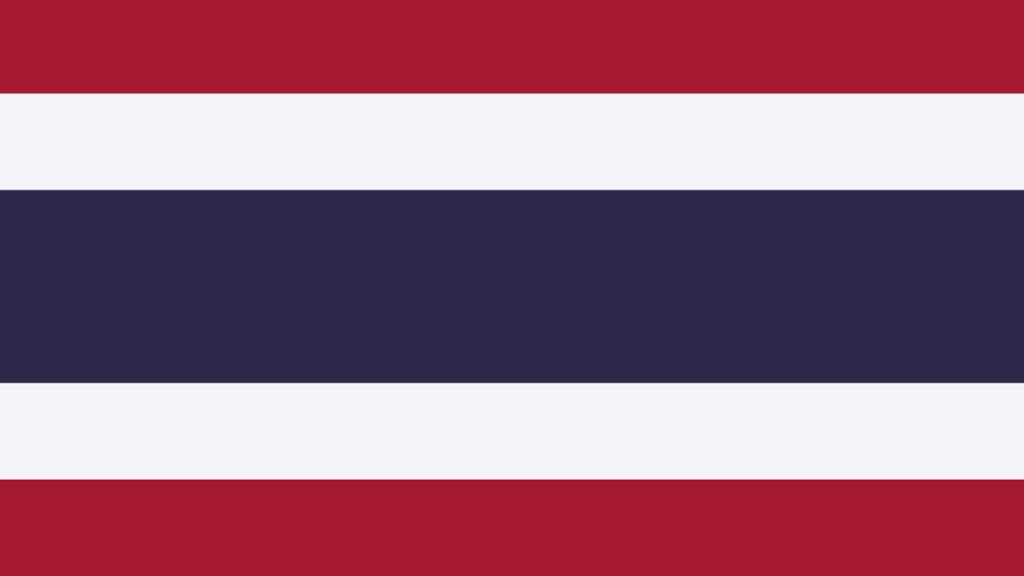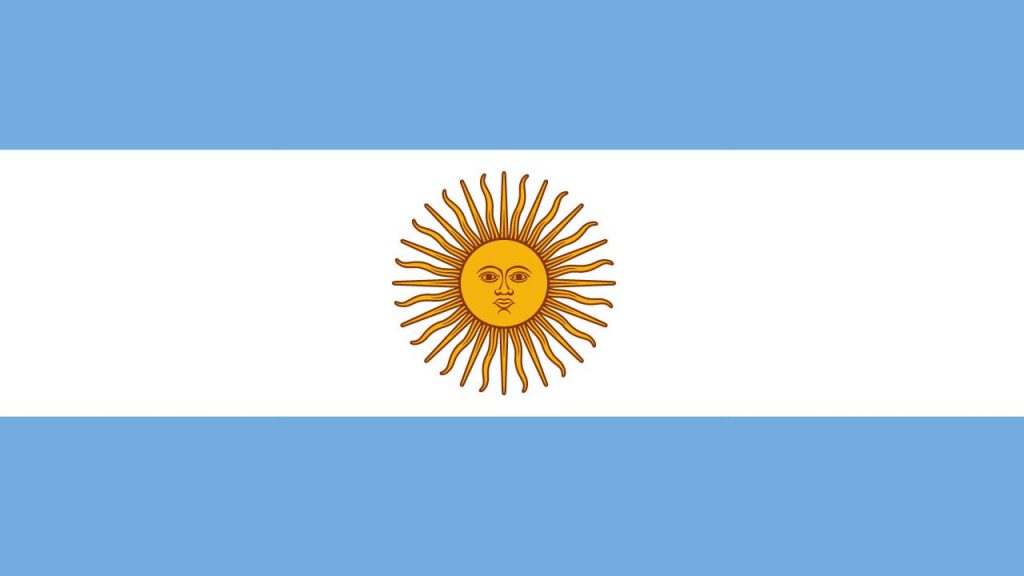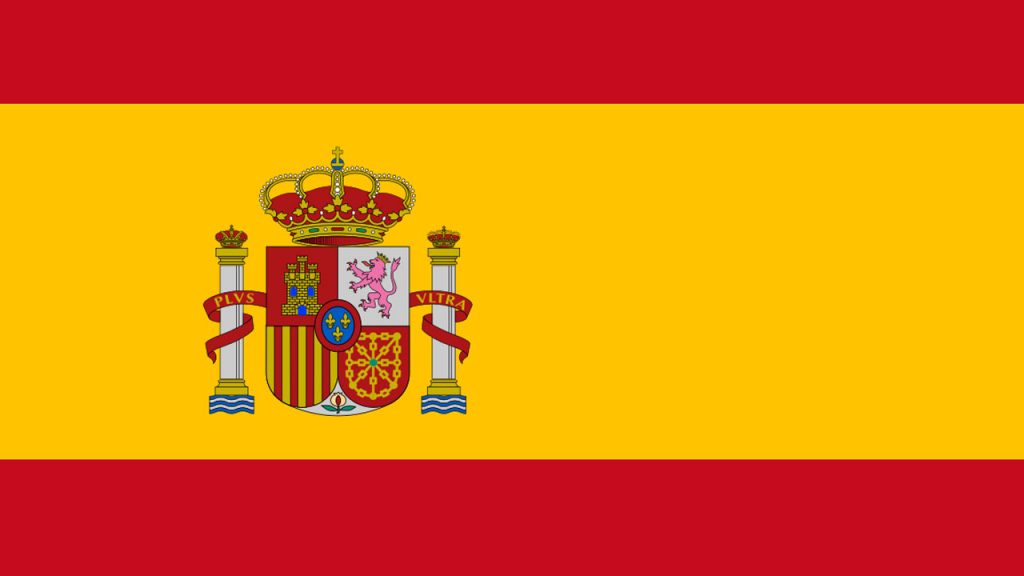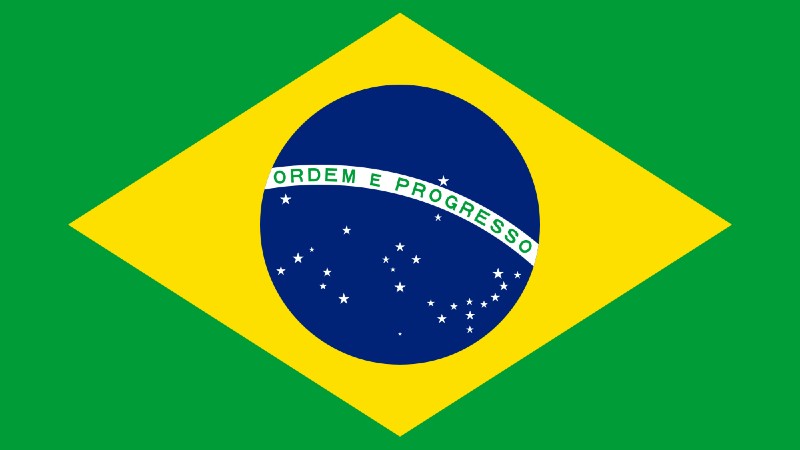Authority Soccer (authoritysoccer.com) is a participant in the Amazon Services LLC Associates Program, an affiliate advertising program designed to provide a means for sites to earn advertising fees by advertising and linking to Amazon.com. This site also participates in other affiliate programs and is compensated for referring traffic and business to them.
It is no secret that soccer is the most popular game in the world. Every year, millions of fans worldwide celebrate a soccer team’s success and suffer for their failures.
People would travel hundreds of kilometers or will call sick to their offices to watch their team play. In some countries, people’s devotion to the sport looks more like a religion than a game.
Although the game is the masses’ favorite, do you know where soccer is more popular?
Two countries raise to the top in soccer popularity among their inhabitants. China has the most significant number of soccer fans in the world, with 187 million.
Nigeria is the country with the highest percentage of its population interested or very interested in soccer, with an astonishing 83%.
For some, it is a mystery why soccer is so popular. Perhaps it is because to play the game, you only need a ball. A few rocks or a couple of shirts can be used as the goal.
In some cases, there’s even no need for a ball. Soccer balls can be improvised with socks or even paper inside of a ballon. The truth is soccer is a passion around the globe, in some countries more than in others.
Where is soccer most popular? Top 10 Countries
A lot has been said and written about soccer. When a result is unfair to a player or a team that deserved the victory, soccer fans say, “The Gods of soccer didn’t want them to win.”
The sport was automatically embraced by the people of every country that knew the game. Books were written, movies were made, superstars were born, died, and resurrected.
The Italian coach Arrigo Sacchi said that soccer is the most important of the least important things. And he was right, although, in some places, soccer seems to be even more important than that.
For instance, in some countries, during the World Cup, every time the national team is playing, the government declares a holiday.
The private companies that choose to work that day are the only ones operating. Those companies usually have the unhappiest workers ever.
And as we are about to see, the passion soccer awakens is not about how many World Cups a nation won or how internationally successful is their biggest club. It is about the game itself.
The Uruguayan Eduardo Galeano once wrote that soccer is the only religion without atheists. And I believe that is pretty accurate.
The latest official report about soccer, its fans, and its popularity worldwide was made by Nielsen Sports, a leading global provider of insights and analytics in the sports industry.
Their report reads that at least 40% of the world’s population over sixteen years declared they are interested or very interested in soccer.
For those who think that almost half of the world interested in soccer is not enough, the second in the list, basketball, got less a little more than 30%.
Top 10 countries most interested in soccer
1. Nigeria, 83%

Soccer is very popular in Nigeria. The NFF Nigerian Football Federation rules the sport.
As the masculine national soccer team is called, the Super Eagles qualified for the World Cup for the first time in 1994, and since then, they have participated in every World Cup edition except in Germany 2006.
In general, Eastern Africans are more interested in soccer and also better players. The countries of the West, like Kenya, Uganda, Mozambique, for instance, don’t have a big soccer tradition.
Eastern African countries are the ones that make it regularly to the World Cup. Cameroon, Ivory Coast, and Nigeria, among others.
Their best performance in World Cups was the first, in USA 1994, where the Africans ended in 12th place. The Super Eagles won The African Cup of Nations three times and finished as runners-up on four occasions.
In 1996, Nigeria won the gold medal in the Atlanta Olympics, beating Argentina in the final, and was chosen by FIFA as the World’s Team of the Year.
Nigeria is also first in another ranking, and it is the percentage of the country’s population involved in any way with activity.
People who play the game at least once a week or perform any action related to soccer. The Africans are at the top of the list with 65%.
2. Indonesia, 77%
Indonesia was the first Asian team to participate in a World Cup in France in 1938. They qualified after their rivals, Japan, quit the qualification tournament.
Indonesia has a not-so-happy record in World Cups; they played only one game against Hungary and lost 0-6. The Asians are the team with fewer games in the international tournament and are on the list of those who never scored.
Indonesia qualified for the Olympics in 1956, their only participation in the tournament.
They stopped the Soviet Union team from scoring in the first game and lost 0-4 in the rematch. The Soviet Union will end up winning the gold medal.
The PSSI (Persatuan Sepakbola Seluruh Indonesia) controls the Indonesian national team. And their fiercest rivals are the Malaysian National team, although not only as soccer rivals, they also have political and religious differences.
Indonesia won the Southeast Asian Games two times and finished as runners-up five times in the AFF (ASEAN Football Federation). This tournament determines the sub-continental champion of Southeast Asia.
Indonesia is 22nd in the ranking of the country’s population involved in soccer, with 17%.
The Asians faced a FIFA suspension in 2012 due to their inconvenient to regulate the national league. Indonesia had two leagues, the rebel Super League (ISL), not recognized by the PSSI, and the Premier League (IPL). The two associations wouldn’t get to an agreement, so FIFA suspended them.
A year after the suspension, both associations ended the differences. Players from both leagues were called for the national team.
A second suspension from FIFA will come in 2015 after the national government was accused of intervening illegally in the Indonesian national league.
The suspension ended in 2016, and the Indonesian national team reached the AFF Championship finals, losing against Thailand.
3. Thailand, 75%

Thailand used to participate as Siam in international tournaments. Their first international match was against Indochina, a team composed of both South Vietnamese and French players.
The FA Association rules Thailand soccer, its league has sixteen teams, and the current champion is the Chiangrai United FC.
In 1998, Thailand faced Indonesia in the AFF Championship. Both teams wanted to avoid the hosts Vietnam in the next phase, so they did their best not to win. FIFA considered both teams violated the spirit of the game and fined them $40,000. Thailand faced Vietnam and lost afterward.
In the FIFA ranking, Thailand ranks 111th, being their best position ever 46th in 1998, and their lowest 165th in 2004.
Their biggest win was against Brunei, 10-0, and their worst defeat was against England, 0-9.
They’ve participated seven times in the Asian Cup, the first in 1972. That year got their best result, ending the Continental tournament in third place.
Thailand won the AFF Championship five times, 1996, 2000, 2002, 2014, and 2016. Their fiercest rivals are the teams from the Southeast Asia region. Malaysia, Vietnam, Indonesia, Myanmar, and Singapore.
The Asians rank 4th in the population’s percentage involved somehow with soccer list, with 41%.
4. Saudi Arabia, 74%
The first image of Saudi Arabians and soccer might be a millionaire buying a European club, but soccer is more than a magnate’s eccentricities to the Saudi people.
The Saudi Professional League has 16 teams and is ruled by the Saudi Arabian Football Federation. With only four appearances in the World Cup, 1994, 1998, 2002, and 2006 the Arab country invests strongly in their soccer to make it better.
The sport’s popularity is so massive that the authorities invested in bringing the 2018 Italian Super Cup between Juventus and Milan. Later on, political reasons made that this competition won’t be played in Saudi Arabia again.
However, in 2019, the Spanish Super Cup was held in Saudi Arabia. 2019 was the first year the Cup was disputed in Saudi Arabia and the first version of the new format.
Four teams participated, Valencia, Atlético de Madrid, Barcelona, and Real Madrid.
Saudi Arabia won the AFC Asian Cup three times, in 1984, 1988, and 1996.
In the USA World Cup in 1994, Saudi Arabia played a decent role, and one of its best players, Saeed Al-Owairan, scored a memorable goal against Belgium. After the goal, his nickname was “The Maradona of the desert.”
Saudi Arabia is in 10th position, with 29% of its population involved in a soccer-related activity.
5. Argentina, 72%

Argentina is one of the countries where soccer is more of a religion than a sport. The AFA (Argentinian football Association) rules their professional soccer.
Their fanatism for the game is as big as their lack of organization. The tournament started in 2020 changed its name from Professional League of Argentinian Football to Diego Maradona Cup after the icon’s death.
When the tournament started, three of the 24 teams were supposed to be relegated at the end of 2020. In the middle of the competition, it was decided that only two will lose their category.
Today, the league decided that there won’t be relegations for two years, 2020 and 2021.
But Argentinian people don’t seem to care much. Their soccer fans tend to take their fanatism to the next level.
For instance, after River Plate beat their rivals Boca Juniors in the Copa Libertadores final in 2018, every December 9th, fans celebrate that match’s anniversary.
Every December 9th, a caravan of people, cars, and motorcycles march from Buenos Aires towards River Plate’s stadium, singing and celebrating the entire day.
Argentina won the 1978 and 1986 World Cups. The 1978 tournament was celebrated in Argentina, the second in Mexico, with the famous Maradona’s Hand of God’s goal.
The South American team also won the gold medal in the Athens 2004 and Pekin 2008 Olympics. The Argentinians won the Copa América 14 times, the Confederations Cup once, and 6 Under 20 World Cup titles.
Soccer is so prevalent in Argentina, and the fanatism is so big, that a group of supporters created the Church of Maradona in 1998, in Rosario.
They gather every Sunday to extoll the former footballer, now deceased, and they celebrate every October 30th celebrate the arrival of the messiah, Maradona’s birth date.
The church is estimated to have between 150,000 and 200,000 followers. They celebrate the “Maradonian Easter” and the “Maradonian Christmas.” The church has its 10 commandments and its own prayers.
Argentina’s 37% of its population participates periodically in a soccer-related activity, putting them in 6th position in the world ranking.
6. Malaysia, 70%
Soccer is a big deal in Southeast Asian countries despite their low presence in World Cups and international tournaments.
Their players rarely participate in one of the main Europen leagues, and still, the game is massively popular.
Malaysians knew soccer thanks to the British, who in 1921 visited Port Klang. The Brits played several sports during their stay, and they were treated awesomely.
To show their gratitude, a British captain offered two cups to be disputed in soccer and rugby in Malaysian territory. The cups were a show of appreciation for how the Brits were treated during their stay.
That is how the first Malaya Cup was born. 6 teams played in the first Malaysian tournament, which was won by Singapore.
First division soccer in Malaysia is different than in the rest of the world. Instead of private or social associations, the Malaysian leagues’ clubs are representative of the State. Like the Police team, the Army team, and so forth.
The first division is the Liga Super, and the Liga Premier is the second division, both with 12 teams. The FAM league started in 1974 and is the only league where State teams are not supposed to participate.
25% of the Malaysian population is involved in soccer activities, the Southeast Asian country occupies the 13th position in the ranking.
7. Mexico, 70%
Mexicans are huge soccer fans. The Central American country held two World Cups, 1970 and 1986. Mexico belongs to FIFA’s Concacaf, the Confederation of North America, Central America, and the Caribbean teams.
In his book named Foul!, Andrew Jennings reveals how the 1986 World Cup changed its course.
The second World Cup in Mexico was so successful in ticket sales, publicity, and business opportunities for investors and sponsors that FIFA changed how they approach the game.
The games in Mexico 86′ were played at noon to be broadcasted at prime time in Europe. Some years after, many players criticized the idea since the heat in the middle of the day in Mexico can be cruel.
Before that World Cup, the public had never shown the same enthusiasm as Mexicans.
It is said that soccer was initially introduced in Mexican society to indoctrinate modern labor practices, such as teamwork and competition.
Mexico first division soccer has 4 tiers, Liga MX, Ascenso MX, Segunda Division, and Tercera Division.
Most Mexican clubs are linked to corporations; this allows the clubs to receive vast amounts of money from private investors to hire players and make their league more competitive.
Mexican first division soccer offers an exciting possibility for some South American footballers. Players from exporting countries like Uruguay, Brazil, and Argentina not good enough to play in Europe or without a communitarian passport choose Mexico.
At the end of their careers, soccer players or players who want to make an economic difference for their lives sign contracts with Qatari, or Saudi Arabian teams, even Chinese. The numbers are high, but the competition level is lower than in the rest of the world.
But players still at their peak, with the idea of migrating to a league that can offer big contracts while maintaining a healthy competition level, migrate to the MX league.
In 1998, Mexican teams were invited to dispute the Copa Libertadores, a tournament for Conmebol teams (South American teams), and they performed, not surprisingly, very well.
They stopped participating in the competition in 2016. During this time, three teams played the finals, five of them the semifinals. Chivas de Guadalajara, Cruz Azul, and Tigres are the teams that were one step away from winning the main competition for clubs on the Continent.
The Mexican national team beat Brazil 4-3 in the Confederations Cup in Mexico with a young Neymar on the field. They also conquered two Under 17 World Championships in 2005 and 2011. Mexicans also got the gold medal in the London 2012 Olympics.
Mexico is 5th on the list, with 39% of its population either playing soccer or participating in soccer-related activities. In 2006 it was estimated that Mexico has more than 324,000 registered soccer players and over 8 million unregistered.
8. Egypt, 69%
Egypt became the first African team to compete in the Olympics when they participated in Antwerp, Belgium, in 1920.
From 1958 to 1961, Egypt had a political alliance with Syria, and the team was called the United Arab Republic. FIFA attributes the team records to Egypt since, according to them, the squad was entirely Egyptian, there were no Syrian players.
Egypt participated in three World Cups, 1934, 1990, and 2018. They are also the first African team to qualify for a World Cup. In their first participation, in 1934, Egypt played and lost their only match against Hungary 4-2.
In 1990, in their second participation (the 56 years gap between 1934 and 1990 is a world record shared with Norway), Egypt needed a dray in their last group match to advance to the next phase, but they lost 1-0 to England.
In 2018, with the Liverpool forward, Mohamed Salah, Egypt shared group A with Russia, Uruguay, and Saudi Arabia. Egypt didn’t make it to the next phase; they lost the three matches.
In the third match of the group against Saudi Arabia, the 45 years old Egyptian goalkeeper El Hadary set the record for the oldest player participating in a World Cup.
Egypt is the most successful team in the African Cup of Nations, with seven titles. They also won the Arab Cup of Nations once, in 1992.
Professional soccer in Egypt is divided into two leagues. The Egyptian Premier League and the Egyptian Second Division. The first division tournament has 18 teams, where Al Ahly is the most successful, with 46 national titles. There is also the Egyptian Cup and the Egyptian Super Cup.
The most famous Egyptian player is Mohamed Salah, thanks to his successful present in Liverpool FC. Mido is another famous Egyptian player, who played in Ajax in the Zlatan Ibrahimovich. In the documentary “Becoming Zlatan,” Mido tells how Egypt used to stop every Ajax game to watch him play.
Egypt is second on the list, with 50% of its population participating in soccer-related activities.
9. Spain, 69%

Spain is a FIFA member since 1909, and its first national team was formed in 1920 to compete in the Antwerp Olympics.
Soccer has always been very popular, although many people started paying attention to their soccer in the 2000s.
The first international title was in 1964, when they won the Euro final against the Soviet Union for 2-1.
Spain hosted the 1982 World Cup, losing in the quarter-finals against Belgium. They reached the quarter-finals again in 1994, losing against the team that will end as runners-up, Italy.
That Spanish participation is remembered by the incident between the Italian Mauro Tassotti and the Spanish Luis Enrique. The Italian hit the Spanish player’s face with an elbow, making him bleed profusely.
The ref should’ve awarded a penalty for Spain, but he failed to see the foul.
Japan/Korea 2002 had Spain eliminated again in quarter-finals, and also with controversy. The Spanish team had two goals invalidated by the officials, alledging infractions that are hard to identify until today.
After that, the co-host of South Korea won the penalty shootout, and the Spanish traveled back home.
From 2008 to 2012, Spain saw its best years. They won the 2008 Euro, the 2010 World Cup, and 2012 again. They reached the Confederations Cup final in 2013, but they lost 3-1 against the local team, Brazil.
The early 2000s was a golden age also for Spanish clubs. Real Madrid, Barcelona, Atletico de Madrid, and Sevilla ruled European Championships and individual awards.
Real Madrid won the UEFA Champions League in 1998, 2000, 2002, 2014, 2016, 2017, and 2018. Barcelona in 2006, 2009, 2011, and 2015.
Sevilla won the UEFA Europa League in 2006, 2007, 2014, 2015, 2016, and 2020. And Atlético de Madrid in 2010, 2012, and 2018.
Spain is 21st on the list, with 18% of its population involved in soccer activities regularly.
10. South Korea, 69%
Korean soccer story is shared with Japan. In the beginning, the Koren national team was known as Joseon.
After the Japanese occupation ended in 1945 with the end of the Second World War, the KFA (Korean Football Association) was founded. In 1948, the KFA joined FIFA and started participating in the organization’s tournament.
Their best participation in World Cups (with some controversy) was in Korea/Japan in 2002, where they ended up in the fourth position.
South Korea won the AFC Asian Cup two times, in 1956 and in 1960. They conquered the gold medal of the Asian games three times, in 1970, 1978, and 1986.
In the last World Cup in Russia, South Koreans were part of the Miracle of Kazan. After losing their first two matches, South Korea still had chances of advancing to the next phase.
They needed to beat the defending champions Germany for two goals and hope for a Mexican victory over Sweden. The Asians beat the Germans 2-0, eliminating them in the first round for the first time in 80 years.
But Mexico lost to Sweden, and the dream ended there for the South Koreans.
32% percent of South Koreans participate in soccer activities once a week, putting them 8th on the list.
11. Brazil, 67%

The next on the list, number 11, is Brazil. According to the Nielsen study, 67% of Brazilians declared having an interest in soccer.
Brazil is the most successful national team ever played the sport. The dramatic defeat against Germany in 2014 for 7-1 undoubtedly impacted the population regarding soccer, but the vast majority of Brazilians love soccer.
The Brasileirão is the Brazilian first division, also known as Brazilian Championship Serie A. There is also Serie B, C, and D.
Brazilians won the World Cup five times, in 1958, 1962, 1970, 1994, and 2002.
The Rio de Janeiro Olympics in 2016 gave Brazilians the only title in soccer they didn’t have, the Olympic gold medal. Neymar and Gabriel Jesus, among others, defeated Germany in penalty shootouts.
In his book Futebol: The Brazilian Way of Life, Alex Bellos tells hundreds of stories that perfectly represent Brazilians’ soccer. From organizing games playing soccer with cars and a giant ball to playing in Amazon’s flooded fields.
Brazilian and soccer history are intimately linked, and it is not possible to tell one without the other.

